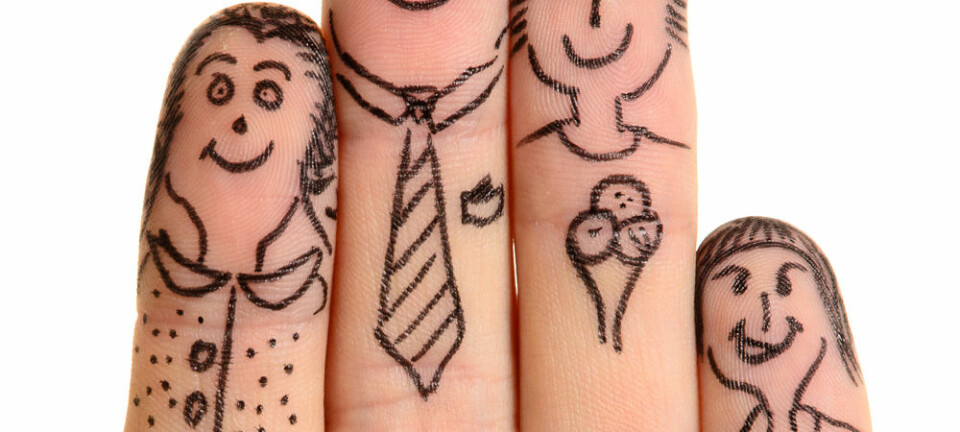This article was produced and financed by The Research Council of Norway

Mum and Dad share the workload
A great many Norwegian couples distribute paid and unpaid work fairly evenly between them, statistics show.
Denne artikkelen er over ti år gammel og kan inneholde utdatert informasjon.
A key aim of Norwegian policy is to promote an equal distribution of paid and unpaid work among dual-earner couples with children.
"But up until now we have not really known how common this type of family is in Norway today,” says Ragni Hege Kitterød, a researcher at Statistics Norway.
Domestic and professional work
Kitterød and her colleague Trude Lappegård has looked at the overall distribution of both domestic and professional work duties among women and men. Their analysis encompasses professionally active women and men who have children between the ages of one and 12 and is based on a representative survey from 2007.
The participants were asked to indicate how they distributed household and maintenance chores and child-care duties, as well as how many hours per week they worked in their main occupation and any side occupations. If they worked overtime or brought work home with them, they were to include this also.
Four types of families
The researchers developed a typology – in other words, a summary of the types of dual-earner families found in Norway. The typology is based on how the couples allocate paid work and domestic duties between them. The researchers distinguish between four types of couples:
-
25 per cent “Neo-Traditional”
One-fourth of the couples were classified as “Neo-Traditional”. According to Kitterød, in this group the mother often works part-time and assumes the main domestic responsibilities, whereas the father works full-time, and sometimes more, outside the home.
-
34 per cent “Gender-Equal Light”
In this group the mother works part-time or a normal full-time week. She usually has the main responsibility for the housework, but the couple often shares the child-care duties equally. The father works full-time, often more, outside the home.
-
23 per cent “Generalised Gender Equal”
In this group both the man and the woman work full-time, and some work even more, outside the home. The housework and child-care duties are shared fairly equally.
-
18 per cent “Specialised Gender Equal”
She works full-time, and sometimes more, outside the home. He works at least full-time. The mother works outside the home more than the father in only 10 per cent of the cases in the overall sample.
“In the last group we saw a general sharing of the housework and child-care duties, but the distribution was more specialised based on the type of task than in the other groups,” says Kitterød.
40 per cent share equally
The researchers concluded that roughly 40 per cent of the couples have a gender-equal relationship in that the mother and the father share both unpaid and paid work equally.
“This situation is most common when both, or perhaps just the mother, has a high level of education, when both have day jobs during regular work hours, and when the father works in the public sector,” says Kitterød.
The Neo-Traditional couples often have a lower level of education. It is also common for couples to fall into this group if the mother has health problems and if one or both spouses work outside of regular, daytime work hours, such as a night shift or rotation schedule.
Overall, child-care duties are more evenly distributed than housework. Still, the father seldom performs the majority of these tasks. But more domestic duties on the part of the mother are counterbalanced by more professional work on the part of the father.
The project has received funding under the Programme for Welfare, Working Life and Migration (VAM) and the Programme for Gender Research at the Research Council of Norway.
Translated by: Connie Stultz/Carol B. Eckman































